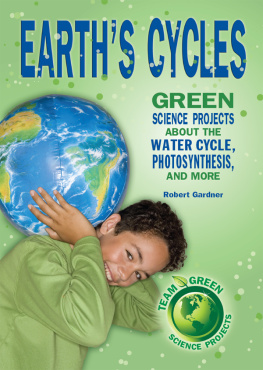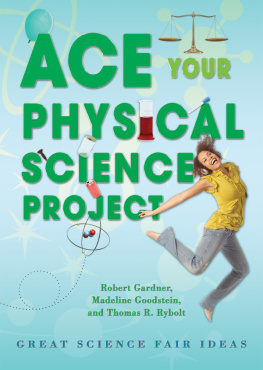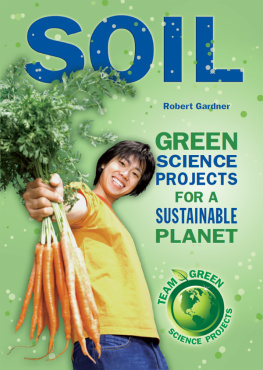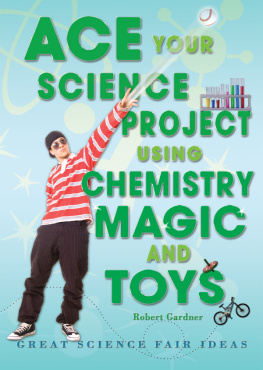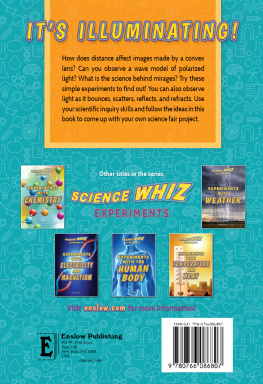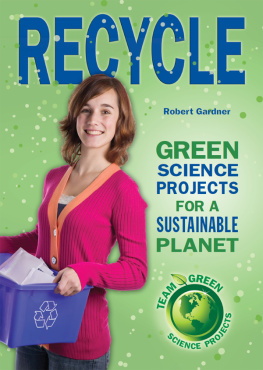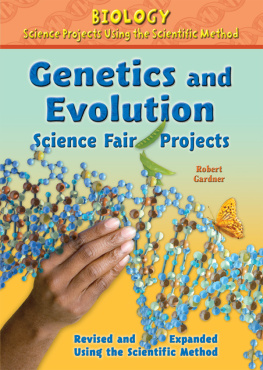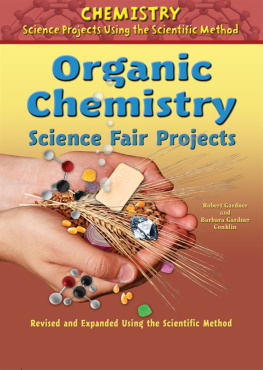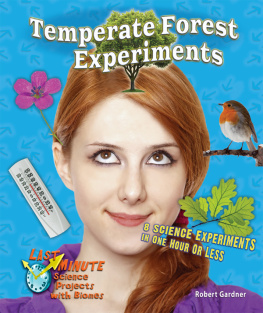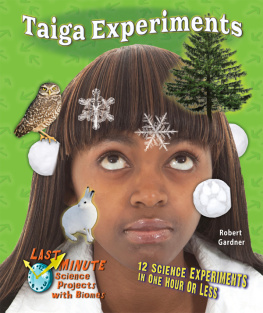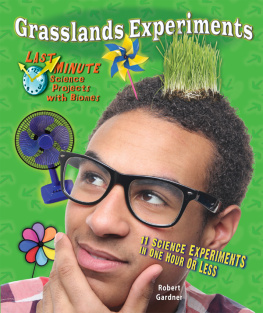What Comes Around GOES Around
Water... oxygen... carbon. They are all part of the natural cycles on Earth, including the water cycle and photosynthesis. How do these cycles work? How is carbon involved in the greenhouse effect? This book presents fun and timely science experiments that explain the solar cycle, the water cycle, and the cycles of gases on Earth, including oxygen, carbon, and nitrogen. Tips for leading a "greener" life, along with great ideas for a science fair project, are included throughout this book.
"This book will excite children with diverse interests about science."
Mary Poulson, PhD, Science Consultant
Associate Professor, Department of Biological Sciences
Central Washington University
Ellensburg, Washington
About the Author
Robert Gardner is an award-winning author of science books for young people. He is a retired high school teacher of physics, chemistry, and physical science. In 2010, he received the Lifetime Achievement Award in Hands-On Science Writing from AAAS/Subaru Science Books & Films.

We live in a world of constant change. But many things come back to be the way they were. We say they make a cycle. For example, we see rain fall from clouds to the ground. At the same time, water is evaporating into the air as a gas. Eventually, the water in the air collects as tiny droplets forming clouds that give rise to rain. Then the rain falls back to Earth completing a cyclethe water cycle. In this book, you will learn more about the water cycle and other cycles as well. Some other cycles include the sun and seasons, and the oxygen, carbon, nitrogen, and phosphorus cycles.
These cycles are ongoing and natural, but the worlds growing population and its activities, such as agriculture, industry, and energy production, can disturb all of Earths cycles. For example, burning fossil fuels (coal, oil, and natural gas) has affected the carbon cycle. Since the beginning of the Industrial Revolution, the burning of fossil fuels has increased, adding nearly 40 percent more carbon dioxide to the atmosphere. Carbon dioxide is a greenhouse gas. It reflects heat radiated by the earth back toward the ground. The boost in the amount of carbon dioxide and other greenhouse gases in the atmosphere has caused Earth to slowly grow warmer. A changing world climate, together with Earths exploding human population, puts great pressure on our limited supply of water, soil, food, and other resources.
To confront this problem, we need to work toward a greener world. By green we mean actions that are good for, or do not harm, the environment.
As you read, you will examine some of Earths natural cycles and the effects that human activities have on them. You will do so by reading, doing experiments to test a hypothesis, making models to illustrate ideas, carrying out demonstrations to better understand concepts, or making measurements. You will discover, too, what you can do to make a greener Earth.

Image Credit: Shutterstock.com
Scientists look at the world and try to understand how things work. They make careful observations and conduct research. Different areas of science use different approaches. Depending on the problem, one method is likely to be better than another. Designing a new medicine for heart disease, studying the spread of an invasive plant species such as purple loosestrife, and finding evidence of water on Mars require different methods.
Despite the differences, all scientists use a similar general approach in doing experiments. It is called the scientific method. In most experiments, some or all of the following steps are used: making an observation, formulating a question, making a hypothesis (an answer to the question) and a prediction (an if-then statement), designing and conducting an experiment, analyzing results and drawing conclusions, and accepting or rejecting the hypothesis. Scientists then share their findings by writing articles that are published in journals.
You might wonder how to start an experiment. When you observe something in the world, you may become curious and ask a question. Your question, which could come from an earlier experiment or from reading, may be answered by a well-designed investigation. Once you have a question, you can make a hypothesis. Your hypothesis is a possible answer to the question (what you think will happen). Once you have a hypothesis, it is time to design an experiment that will test a consequence of your hypothesis.
In most cases, you should do a controlled experiment. This means having two groups that are treated the same except for the one factor being tested. That factor is called the variable. For example, suppose your question is Do green plants need light? You would use two groups of green plants. One group is called the control group; the other is called the experimental group. The two groups should be treated the same except for one factor. Both should be planted in the same amount and type of soil, given the same amount of water, kept at the same temperature, and so forth. The control group should be placed in the dark. The experimental group should be placed in the light. Light is the variable. It is the only difference between the two groups.
During the experiment, you will collect data. For example, you may measure the plants growth in centimeters, count the number of living and dead leaves, and note the color and condition of the leaves. By comparing the data collected from the control and experimental groups over a few weeks, you may be able to draw conclusions. Healthier growth and survival rates of plants grown in light would allow you to conclude that green plants need light.
Two other terms are often used in scientific experimentsdependent and independent variables. One dependent variable in this example is healthy growth, which depends on light being present. Light is the independent variable. It doesnt depend on anything. After the data is collected, it is analyzed to see if it supports or rejects the hypothesis. The results of one experiment often lead you to a related question. Or they may send you off in a different direction. Whatever the results, something can be learned from every experiment.

Image Credit: Shutterstock.com
At times, as you carry out the activities in this book, you may need a partner to help you. It is best to work with someone who enjoys experimenting as much as you do. That way you will both enjoy what you are doing. If any safety issues are involved in doing an experiment, you will be warned. In some cases, to avoid danger, you will be asked to work with an adult. Please do so. We dont want you to take any chances that could lead to an injury.
Like any good scientist, you will find it useful to record your ideas, notes, data, and anything you can conclude from your investigations in a notebook. By doing so, you can keep track of the information you gather and the conclusions you reach. Your notebook will allow you to refer back to things you have done and help you in doing other projects in the future.
Some of the investigations in this book contain ideas that may lead you to a science fair project. Those project ideas are indicated with a symbol (

